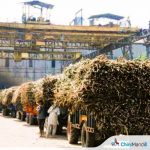Let’s delve into the concept of maintaining a minimum aerial distance between two sugar factories. The establishment of sugar factories involves considerations beyond production capacity and economic viability. One critical factor is the aerial distance maintained between two sugar factories. In Maharashtra, this distance is fixed at 25 kilometers, a unique feature compared to other States where the norm is 15 kilometers. This is as per the provisions of the Sugar Control Orders passed by the Union Government. As per the rules keeping minimum distance of 15 kilometers between two sugar factories is the condition president all over the country and discretionary power is given to States to increase it if they thin fit. This practice of keeping a certain distance between two sugar factories has been a topic of discussion and regulation.
Here are the key points:
PURPOSE OF MINIMUM DISTANCE: Originally, the idea behind setting a minimum aerial distance was to ensure the stability of the sugar economy and prevent shortages of sugarcane for millers. It aimed to avoid excessive competition that could lead to economic instability or monopolies.
ARGUMENTS FOR AND AGAINST:
- A) Proponents of Removal:Some farmer associations and millers argue that removing the distancerequirement would encourage healthy competition. They advocate for an open market where the fittest mills survive, leading to better rates for farmers. The existing 25-kilometer limit can create a monopoly over cane supply and result in discrepancies in Harvesting and Transportation (H&T) costs.
- B) REASON FOR RETENTION: Historically, the Congress-NCP government raised the minimumdistancefrom 15 km to 25 km to prevent poaching and secure sufficient cane area for individual factories. The rationale was to maintain stability and avoid excessive fragmentation of the industry.
- C) RECENT DEVELOPMENTS:Around four years ago, the BJP government in Maharashtra considered abolishing the 25-km limit. However, strong reactions from the sugarsector led to further analysis. The issue remains under review, and the Sugar Commissioner of Maharashtra is preparing a report for the state government.
In summary, the debate revolves around striking a balance between competition, efficiency, and stability in the sugar industry. The final decision will impact millers, farmers, and the overall economy.
DEMAND OF FARMER ORGANISATIONS FOR ABOLITION OF DISTANCE CRITERIA: The farmer organizations demand for abolition of the rule of keeping minimum distance between two sugar factories in the following grounds.
1) Market Efficiency: Some farmer organizations argue that removing the minimum distance requirement would encourage healthy competition among sugar mills. It would allow them to operate more efficiently and flexibly.
2) Flexibility for Farmers: Abolishing the distance condition would give farmers the freedom to choose which mill to sell their produce to, rather than being bound to a specific mill within the designated
3) Cane Arrears: Currently, farmers are forced to sell to a mill even if there are cane arrears (delayed payments). Removing the restriction could address this issue.
4) Challenges and Considerations –
- a) Balancing Interests:While deregulation may benefit mill owners and farmers, policymakers need to strike a balance betweenmarket dynamics and ensuring stability in the sugar
- b) Alternative Arrangements: Over time, states could encourage market-based long-term contractual arrangements, phasing out the cane reservation area and bonding system2.
In summary, the demand for abolition reflects the need to adapt regulations to changing market dynamics while ensuring fair treatment for both farmers and mill owners.
MILLERS RELUCTANCE FOR REMOVAL OF CRITERIA FOR KEEPING DISTANCE BETWEEN TWO SUGAR FACTORIES: The reluctance of sugar factories to remove the system of maintaining a minimum distance between two sugar mills can be attributed to several reasons:
1) Sugarcane Availability: The primary concern is ensuring a steady supply of sugarcane to sustain mill operations. If sugar mills are allowed to set up too close to each other, they might compete for the same pool of farmers and sugarcane, leading to shortages and inefficiencies.
2) Economic Viability: Sugar factories require a certain volume of sugarcane to operate profitably. When mills are too close, they might face challenges in sourcing enough cane, impacting their financial health. Closures due to insufficient cane supply would adversely affect farmers and investments.
3) Market Distortions: Removing the minimum distance could lead to unhealthy competition. Mills might undercut each other, affecting cane prices and farmer income. Monopolies or oligopolies could emerge, harming both farmers and consumers.
4) Operational Challenges: Proximity between mills can create logistical issues in cane harvesting, transportation, and processing. Traffic congestion, resource sharing, and environmental concerns may arise.
5) Government Policy and Stability: The government aims to strike a balance between competition and stability. Statutory backing for distance norms ensures orderly growth and prevents hasty mill setups.
In summary, while some argue for deregulation to encourage competition, maintaining a minimum distance helps stabilize the sugar industry, safeguard farmers, and ensure sustainable operations.
ADVERSE EFFECTS OF REMOVING DISTANCE CRITERIA –Removing the criteria of radial distance between two sugar factories could have several adverse effects.
1) Increased Health Risks: Sugar factories emit pollutants such as particulate matter, sulfur dioxide, and nitrogen oxides. If they are located too close to each other, the cumulative pollution levels could harm nearby communities, leading to respiratory issues, cardiovascular diseases, and other health problems.
2) Environmental Impact: Removing the radial distance criteria might lead to clustering of sugar factories in specific areas. This concentration could harm local ecosystems, soil quality, and water resources due to increased waste disposal, chemical runoff, and land degradation.
3) Traffic Congestion: Sugar factories require transportation of raw materials (like sugarcane) and finished products. If factories are too close, it could result in heavy traffic, road congestion, and wear and tear on infrastructure.
4) Noise and Odor: Sugar factories can be noisy and emit strong odors during processing. If they are situated too closely, residents in the vicinity may experience disturbances affecting their quality of life.
5) Competition and Economic Impact: Removing the distance criteria might lead to intense competition between factories, affecting market dynamics, pricing, and profitability. Smaller factories could face challenges if larger ones dominate the area. The problem of Sugar cane availability according to crushing capacity will severely crop up and affect the viability and sustainability of the sugar factories.
6)Risk of Accidents: Sugar factories involve machinery, chemicals, and high temperatures. If they are too close, accidents (such as fires or chemical spills) could have severe consequences for workers and nearby communities.
EXPECTED PROPER SOLUTION BALANCING THE TWO OPPOSING VIEWS: Finding a proper solution that balances the two opposing views regarding the minimum distance between sugar factories is essential. Here are some potential approaches:
Gradual Relaxation: Gradually reduce the minimum distance requirement over time. Monitor the impact on cane availability, mill operations, and farmer income. Adjust regulations based on empirical data.
Technology Adoption: Invest in modern farming practices and transportation. Especially formulation of Consolidated Farming at Village Level policy for enhancing the productivity of the land by adopting mechanized farming. Improve efficiency to mitigate the impact of reduced distances.
Stakeholder Dialogue: Engage mill owners, farmers, and policymakers in discussions. Consider their perspectives and collaborate on sustainable solutions.
In conclusion, the debate over maintaining a minimum distance between sugar factories remains multifaceted. While proponents argue for deregulation to encourage competition and flexibility, opponents emphasize the need for stability, cane availability, and orderly industry growth. Striking the right balance between market dynamics and safeguarding the interests of farmers and mill owners is crucial for the sustainable development of the sugar sector.
P.G. Medhe is the former Managing Director of Shri Chhatrapati Rajaram Sahakari Sakhar Karkhana Ltd and sugar industry analyst. He can be contacted at +91 9822329898.













Today this restriction is for new entrants in the industry.As he can can’t establish new mill .However sugarcane growers are at liberty to sell his cane.to factory of his choice.do this doesn’t impact farmers prospective . Currently this is happening in Maharashtra and farmers are selling their cane to Mills at 89/100mk.away.